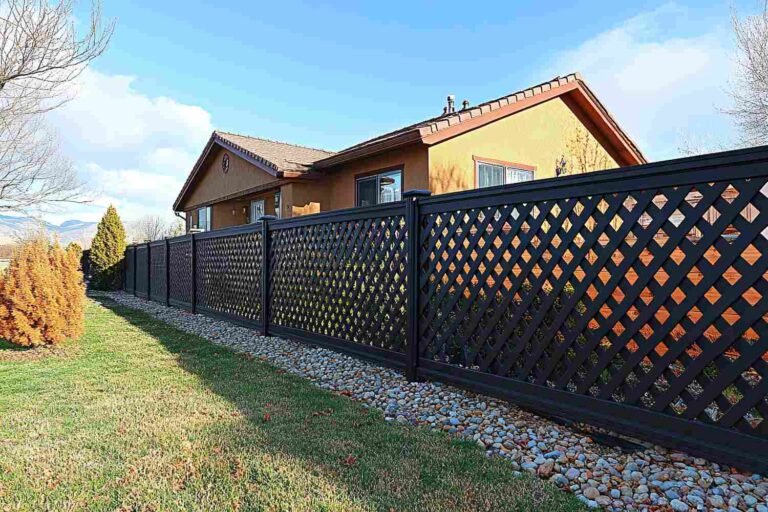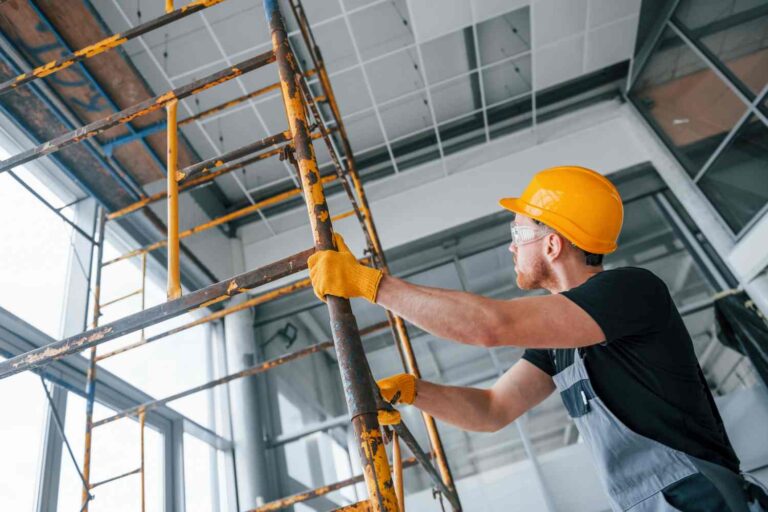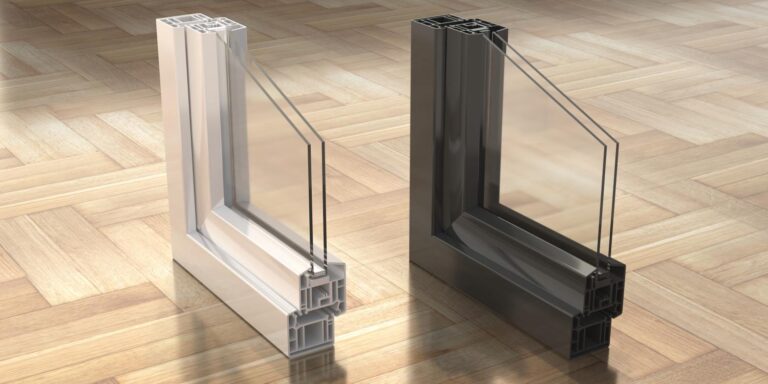- 17 September 2024
- 4 min read
Optimal fencing options for gardens in windy areas

Table of contents
Considerations for wind-resistant fences
When considering wind resistant fencing, it’s crucial to focus on material selection, design, and installation. Materials such as vinyl or metal are preferred for their durability and low maintenance, and they handle wind well. Opt for designs that allow airflow, like fences with gaps between slats, to reduce wind pressure and the risk of damage. Proper installation is key; fence posts should be anchored deeply with concrete to enhance stability.
Top fencing materials for windy areas
For windy area fencing, the top fencing materials include vinyl, metal, and treated wood. Vinyl is highly durable and resistant to wind damage, requiring minimal upkeep. Metal fences, especially those made from aluminum or steel, offer robustness and can be treated to resist rust. Treated wood, while not as resistant as metal or vinyl, can also be a good option if properly maintained and installed with a design that allows for some wind to pass through.
Vinyl fencing
Vinyl fencing is a popular choice for its durability, low maintenance, and aesthetic flexibility. It’s made from a type of plastic called PVC (polyvinyl chloride), which makes it resistant to decay, rust, and pests. Vinyl fences do not need painting or staining and can be easily cleaned with soap and water. They come in a variety of styles, including privacy, picket, and decorative options, and can mimic the appearance of wood or ornamental metal fences. Vinyl is also non-toxic, as it doesn’t require preservative treatments.
Metal fencing
Metal fencing is strong, durable, and available in types like aluminum, steel, and wrought iron, each with distinct advantages:
- Aluminum – lightweight, corrosion-resistant, and low-maintenance, ideal for decorative purposes and coastal areas.
- Steel – very strong and ideal for security, capable of withstanding greater impacts than aluminum but may need rust prevention treatment.
- Wrought Iron – known for its elegance and strength, it allows for custom designs but requires regular maintenance to prevent rust.
Metal fences provide long-lasting security and enhance property aesthetics, suitable for both residential and commercial applications.
Composite fencing
Composite fencing, made from wood fibers and recycled plastics, combines the natural look of wood with the durability of synthetic materials. It is resistant to weather, rot, and insects, and requires minimal maintenance such as easy cleaning with soap and water. Available in various colors and styles, it mimics wood grains and suits various architectural designs. As an eco-friendly option, it reduces landfill waste and uses less new timber. Installation is straightforward, with components designed to fit together seamlessly.
Wire mesh fencing
Wire mesh fencing is a cost-effective, durable option ideal for both residential and commercial uses. It features a grid-like structure that offers visibility while maintaining security, making it suitable for areas where sight lines are important. The fencing is made from steel or metal alloys, often galvanized or coated to resist weather and rust. It provides good security with customizable mesh sizes to deter animals and intruders.
Timber with gaps
Timber fencing with gaps, such as spaced board or picket styles, combines aesthetic appeal with practical benefits. The gaps allow for airflow and light, making it suitable for gardens or backyards where ventilation is needed. This fencing can be customized in gap size to balance privacy and visibility, crafted from durable woods like cedar or pine that can be treated for enhanced weather resistance.
What to look for when choosing a wind-resistant fence?
When choosing a wind-resistant fence, consider the following key factors:
- Material durability
- Fence design
- Proper installation
- Height and size of gaps
- Maintenance needs
Wind-resistant fence – hire a professional or erect it yourself?
Deciding whether to hire a professional or erect a wind-resistant fence yourself depends on several factors:
- Skill level – installing a wind-resistant fence requires a good understanding of construction techniques, particularly for ensuring that posts are deeply and securely anchored. If you’re comfortable with your DIY skills, have the necessary tools, and understand the principles behind wind-resistant designs, you might opt to install it yourself.
- Complexity of the project – consider the complexity of the fence design. Simple panel installations might be manageable DIY projects, but more complex designs, especially those that require precise alignments or have customized components like gates or reinforced posts, might benefit from professional handling.
- Cost – although hiring professionals involves labor costs, they can often source materials at a lower cost and guarantee quality installation. Mistakes in DIY projects can lead to additional expenses due to repairs or even complete re-installations.
You might be interested in...
- Building advice
- Renovation advice

17 September 2024
The cost of a new kitchen – what expenses do you have to take into account?
When planning for a new kitchen, several key expenses need consideration. These include cabinetry, appliances, countertops, flooring, and installation. Additionally, you should factor in costs for lighting, plumbing, and finishing touches. Each of these components varies widely in price based on quality, materials, and customization. It’s important to get detailed quotes and plan for contingencies to ensure your budget covers all aspects of the renovation.
- Building advice

17 September 2024
Fundamentals of scaffolding
Scaffolding is a crucial temporary structure in construction, used to support workers and materials at elevated heights. There are several types of scaffolding: supported scaffolding, suspended scaffolding, and mobile scaffolding. Regulations mandate that scaffolds support their weight plus four times the maximum intended load. Workers need specific training on the scaffolding they use, including safe operation, hazard recognition, and understanding of load capacities.
- Building advice

17 September 2024
Benefits and drawbacks of double glazed windows
Double glazed windows are a popular choice for homeowners looking to enhance their property’s energy efficiency and comfort. Comprising two layers of glass with a space between them, these windows are designed to reduce heat transfer, making them an ideal investment for both warm and cool climates. While they offer significant advantages such as improved insulation and noise reduction, double glazed windows also come with certain drawbacks, including higher initial costs and potential issues with seal integrity. In this article, we’ll explore both the benefits and disadvantages of double glazed windows to help you determine if they are the right choice for your home.